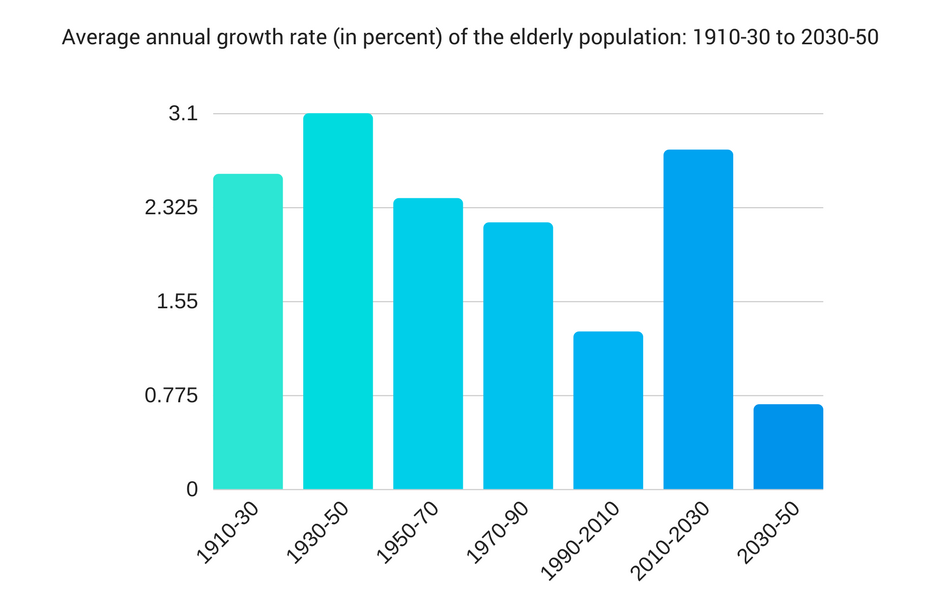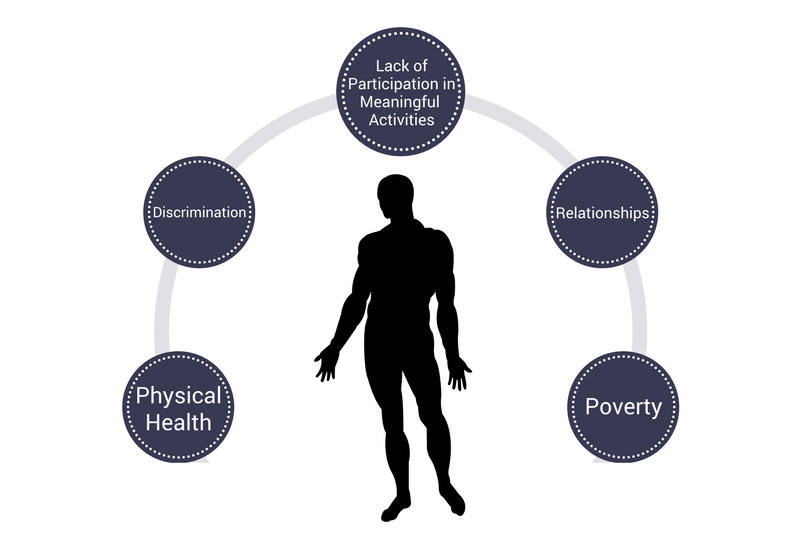Elderly Population Growth is expected to explode till year 2030.
The elderly population has grown substantially in this century ....
Declining fertility and mortality rates has contributed to a sharp rise in the median age of American population (from 20 years old in 1860 to 34 in 1994).
According to the Census Bureau's "middle series" projections, the geriatric population will get doubled between now and the year 2050, with maximum growth occurring between 2010 and 2030. By that year, as many as 1 in 5 Americans could be elderly.
The "oldest old" or those aged 85 and over are the most rapidly growing elderly age group.
Accompanied risks…
Aging, being a process of getting older, wiser, freer should ideally be something to look forward to. However, it is not always so idyllic. Chronic medical disorders, failing eyesight, hearing loss and other physical changes, apart from emotional disturbances like loss of friends and loved ones and the inability to take part in once-cherished activities, cause fear of pain, disability, dependence, or immobility, and even loss of self-esteem. This can take a heavy toll on an aging person's well-being.
National Institute of Mental Health (NIH) states Depression as one of the most common mental disorders in the United States.
As the daily activities begin to diminish with the increasing age, self-criticism comes into the picture and paves a pathway for depression in older adults. This occurs regardless of whether predisposing risks are biological, psychological, or social.
Brain scans of people who witness the onset of depression in old age often reveal spots deprived of adequate blood flow. This is believed to result from years of high blood pressure (resulting from stress). These chemical changes may enhance the likelihood of developing this disorder.
There isn’t any exact cause recognized for it. Several factors such as genetics, stress, brain chemistry, are believed to be contributing to this illness.
Clinical depression in older adults is common but less prevalent in comparison to the younger adults. That doesn't mean it's normal. Late-life depression affects about 6 million Americans ages 65 and older and can have serious consequences like increased risk of morbidity, increased risk of suicide, cardiac diseases, decreased physical, cognitive and social functioning, greater self-neglect, and even reduced ability to rehabilitate, all of which are in turn associated with increased mortality.
The National Institute of Mental Health considers depression in people aged 65 and older to be a major public health problem that requires special attention.
However, this condition becomes a diagnostic and therapeutic challenge in the elderly population. Because of changes in an elderly person's circumstances and physical illnesses that accompany aging, doctors and family may miss the signs of depression. As a result, older adults are often misdiagnosed and undertreated.
Is it Depression or Dementia?
Depression has been both proposed to be a risk factor as well as a prodrome of dementia. Since both share similar symptoms of cognitive impairment, including memory problems, sluggish speech and movements, and low motivation, so it can be difficult to tell the two apart.
| Symptoms of Depression | Symptoms of Dementia |
| Rapid mental decline | Slow mental decline |
| Complete awareness of time and surroundings | Disorientation, confusion and getting lost in familiar locations is common |
| Loss of focusing ability | Loss of short-term memory |
| Retarded, but normal language and motor skills | Writing, speaking, and motor skills are impaired |
| Concerned about memory problems | Doesn’t notice memory issues |
Types of Depressions
- Major Depression: Interference with the ability to perform routine activities like concentrate on work, sleep, eat, and enjoy life.
- Persistent Depressive Disorder or Dysthymia: Symptoms are less severe than those of major depression, but last a long time (at least two years).
- Minor Depression: Symptoms are less severe and do not last long.
However, the elderly are more likely to suffer from subsyndromal depression that can lead to major depression if left untreated. The National Institute for Mental Health estimates that as many as five million elderly people in the U.S. suffer from subsyndromal depression.
Fortunately, more than 80% of depressed seniors can be successfully treated with medication, psychotherapy or a combination of both. Even in some types of dementia, symptoms can be reversed, halted, or slowed down.
References:
- Depression in Older Adults
- Loneliness, depression and sociability in old age
- The complex relationship between depression and dementia
- Geriatric Depression
- Sixty-Five Plus In The United States.
Coping with Schizoaffective Disorder
A person with Schizoaffective disorder primarily experiences symptoms of psychosis even in the absence of mood issues. Read More..










